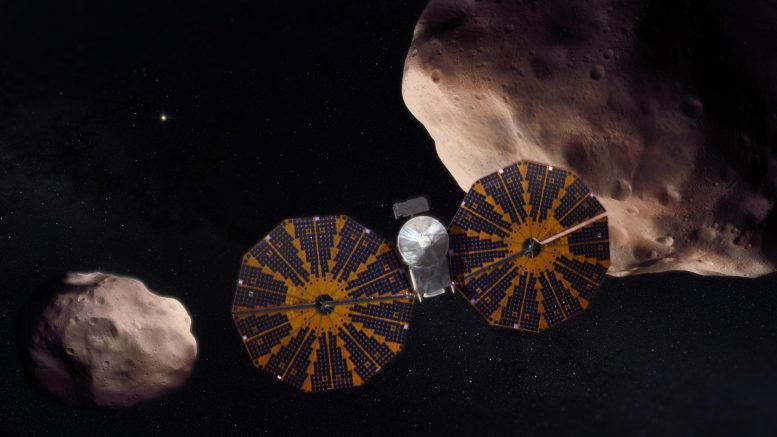
Lucy will explore the Jupiter Trojan asteroids – thought to be “fossils of planet formation.” Credit: NASA’s Goddard Space Flight Center
NASA’s Lucy spacecraft is set to fly by the asteroid Dinkinesh on November 1, marking its first asteroid encounter. The flyby will test Lucy’s terminal tracking system and will temporarily interrupt communication with Earth.
NASA’s Lucy spacecraft is on track for its first asteroid encounter on November 1. Lucy’s optical navigation team has confirmed that the latest trajectory correction maneuver on September 29 accurately set the spacecraft on course for its flyby of the small main belt asteroid Dinkinesh. The spacecraft is anticipated to pass approximately 265 miles (425 km) from the asteroid at 12:54 p.m. EDT.
On October 28, the team sent the spacecraft what is known as the final knowledge update, a package of data with the most up-to-date information about the relative positions of the spacecraft and asteroid. This dataset is precise enough to guide the spacecraft for nearly all the half a million miles (800,000 km) that currently separate Lucy and Dinkinesh.
On November 1, 2023, NASA’s Lucy spacecraft will fly by the small Main Belt asteroid Dinkinesh (previously known as 1999 VD57). This asteroid flyby was added to Lucy’s list of targets in January 2023. Credit: NASA’s Goddard Space Flight Center
Tracking and Monitoring Systems
About an hour before the spacecraft’s closest approach, when it’s approximately 10,000 miles (16,000 km) from the asteroid, Lucy will begin actively monitoring the position of Dinkinesh with its terminal tracking system, although due to Dinkinesh’s small size, the system is not expected to “lock-on” to the asteroid until just a few minutes before closest approach. This system will autonomously reorient the spacecraft to keep the small asteroid within the field of view of the science instruments as the spacecraft zooms by at around 10,000 mph (4.5 m/s). This will be the first use of this terminal tracking system, and this flyby was designed to test the system in real spaceflight conditions.
Communication and Data Downlink
As Lucy approaches Dinkinesh on the morning of November 1, the spacecraft will rotate into a position that enables it to continually track the asteroid. This will move the high-gain antenna away from Earth, and the spacecraft will not be able to communicate again until it has completed the encounter sequence and reoriented itself so that the high-gain antenna is pointing back toward Earth. Imagery and other science and engineering data from the flyby will then be downlinked over the next weeks.

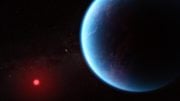
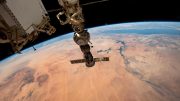

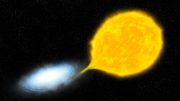

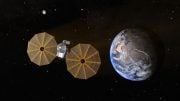
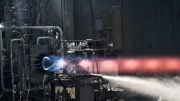

Be the first to comment on "First Asteroid Encounter: NASA’s Lucy Spacecraft Ready to Meet Dinkinesh"